Ever since I installed a mobile ham radio in my Subaru, there has been a pretty noticeable whine that revs up and down with the engine. I got a few complaints that the whine was on my transmitted signal. I can also hear the whine through my subwoofer, though it is quieter. I needed a low-pass filter to let the DC from my battery make it through to the radio while blocking any alternator-induced AC coming along for the ride. I was going to just buy one but then I searched the web a little and found that it was fun and easy to build my own!
I found Jim’s (KB1VMX) write-up and thought I’d try it out. He used a quick-connect shackle but I thought I’d try a toroid. (I quickly learned that the quick-connect shackle has the advantage of being much easier to wrap wire through!)
Here I am right after I realized the spec said 20 feet of wire, not 20 inches.
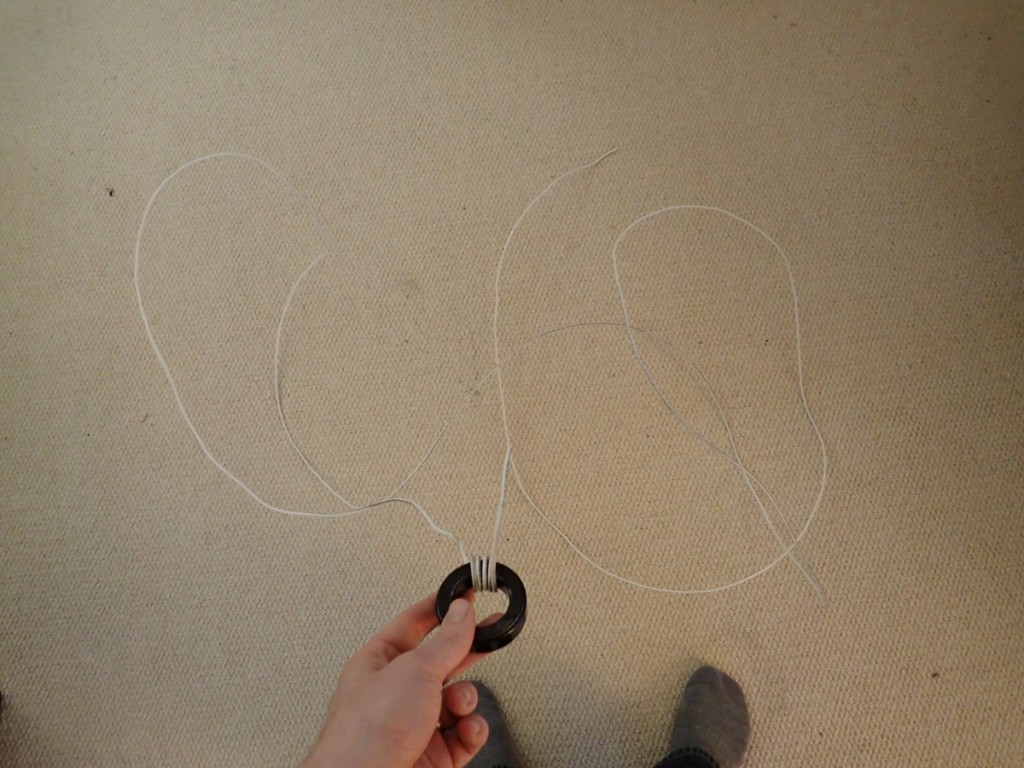
So then I wrapped and wrapped and wrapped to get a good inductor.
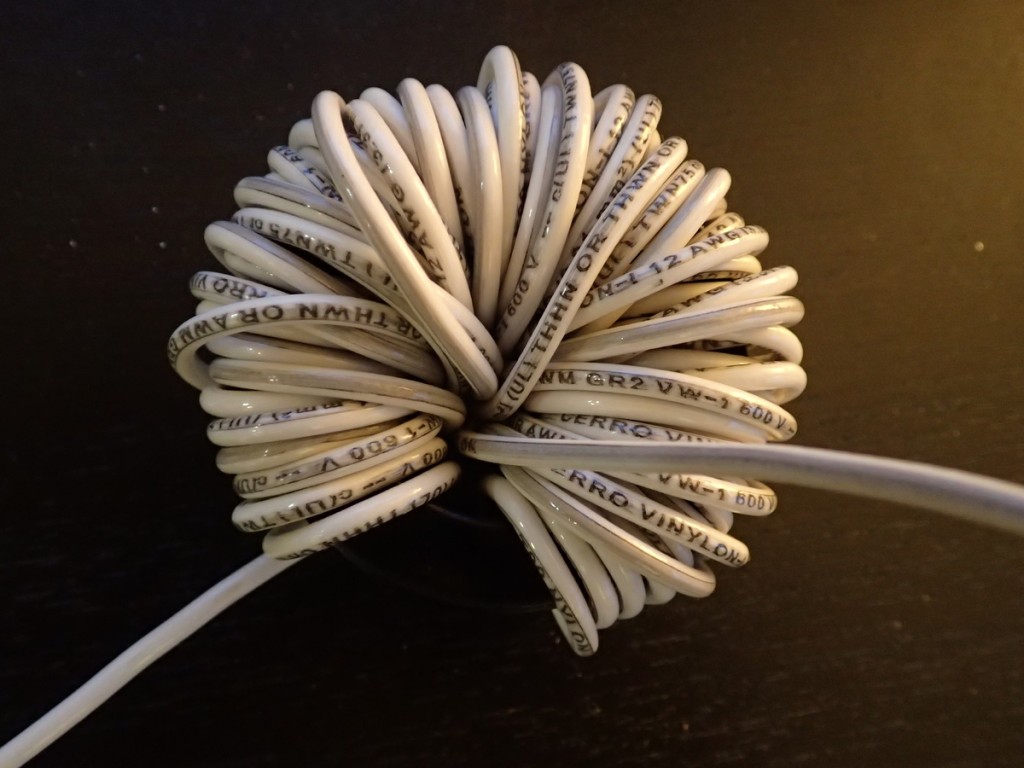
A low-pass filter is basically a complex voltage divider with the inductor between Vin and Vout to provide high impedance to high frequencies and the capacitor between Vout and ground to short any remaining high frequencies to ground. I put it in this project box and hot-glued the hell out of it.
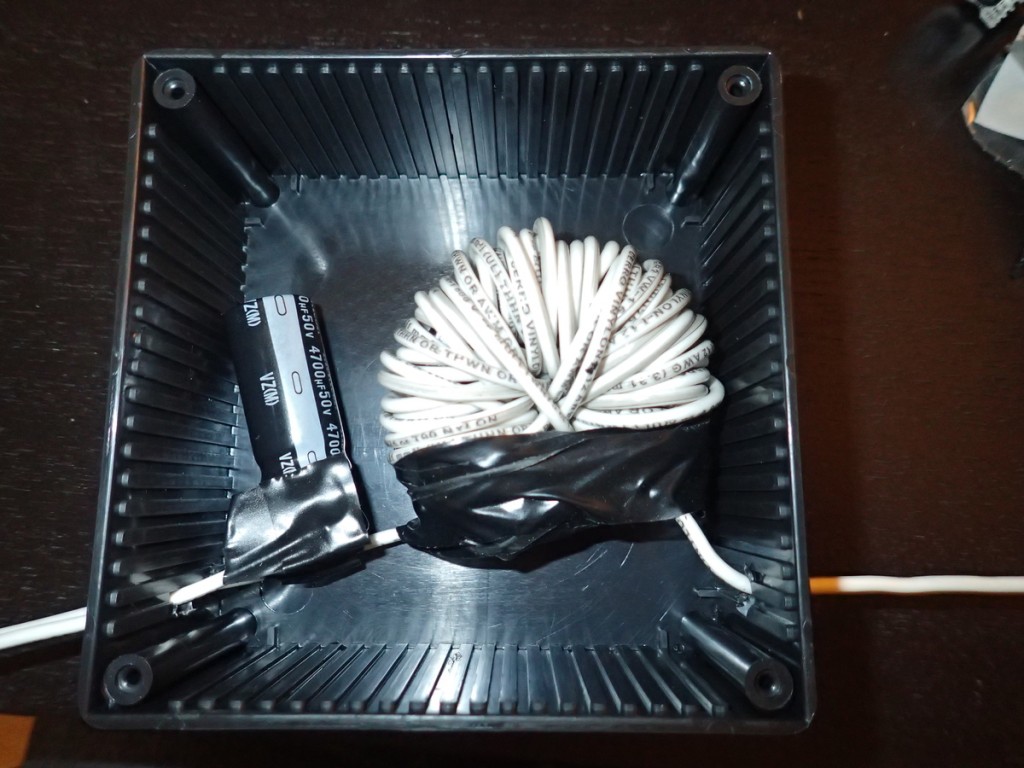
The glued box looks like this:
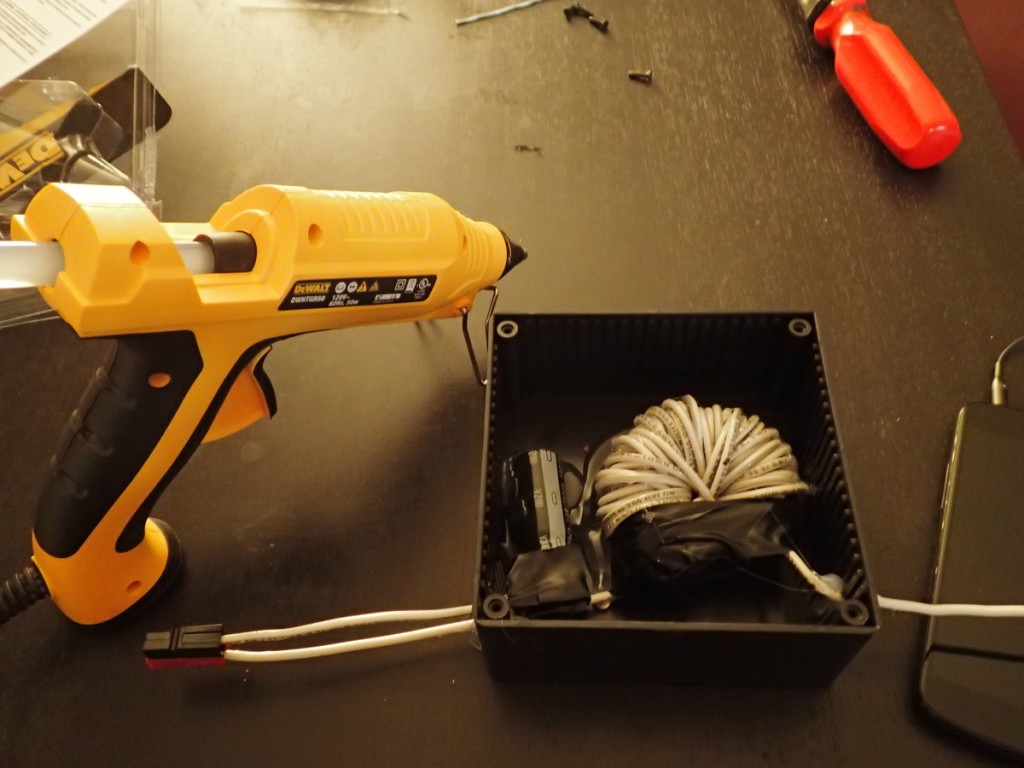
Finally, I had to find a place for it under the hood. I installed Anderson Powerpoles on it in case I wanted to remove it easily later.
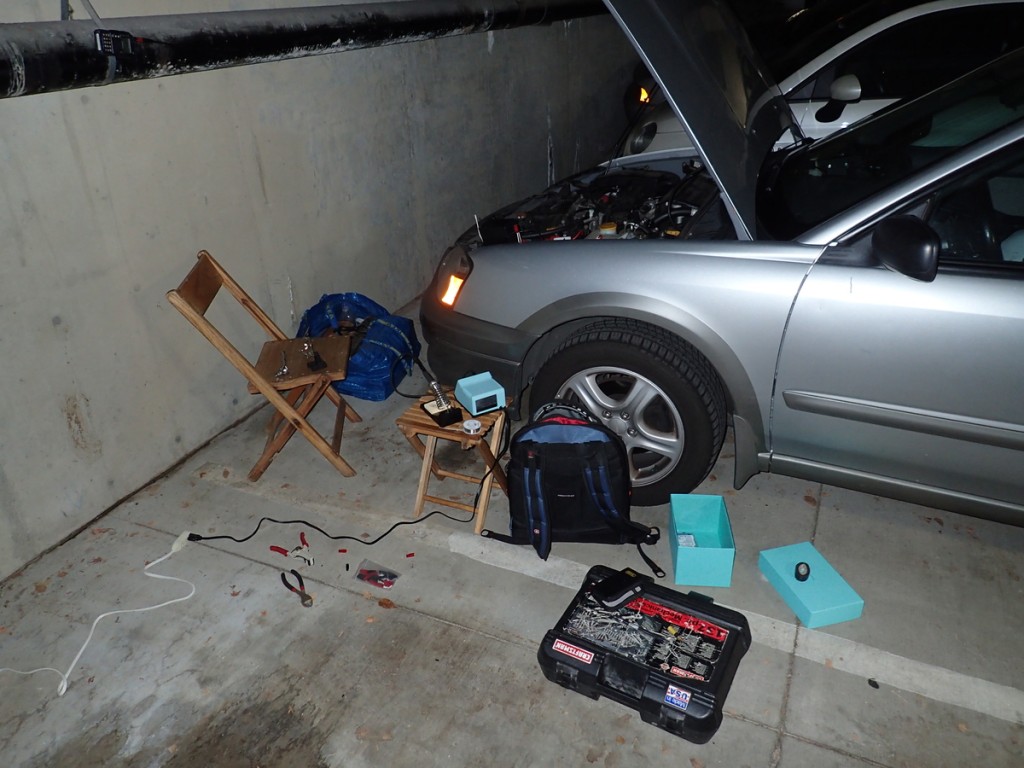
I found a nice spot between the battery and the headlight.
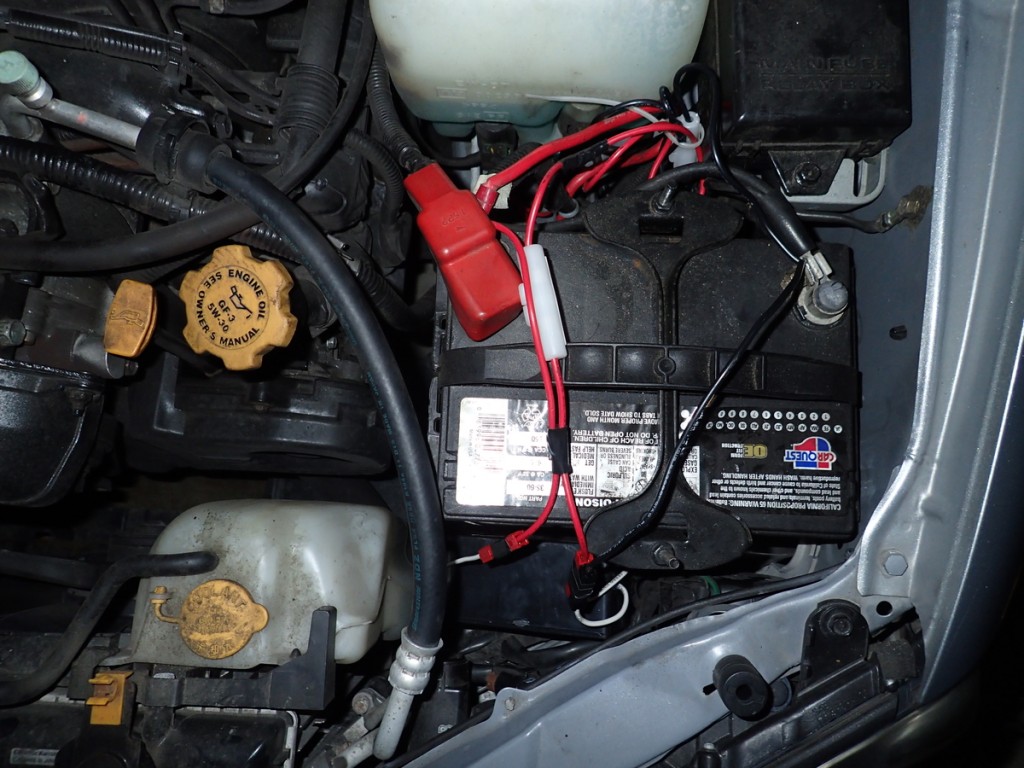
It work’s amazingly well. There is no whine at all on my radio. I can hear the quiet whine on the subwoofer so I might actually make another one to install back by the amplifier anyway. That thing uses a bit more power than the radio. 😉
Thanks for the info. I think you need a high pass filter for the power run going to your amplifier. The sub wouldn’t be getting any highs anyway so filtering the power for it won’t affect your sound.
Hey no prob! This low pass filter lets the DC 12V from the alternator arrive cleanly at the amp without any jiggles riding on it, which were causing the whine. DC is the lowest frequency and it cuts everything else out. I didn’t add any filtering to any of the audio signal cables. What benefit are you thinking I’d get with a high-pass?
What size and mix was the toroid? I would think it would have to be of a large physical size if you were going to fit 20 feet of AWG # 12 wire on it. I cannot find a mix that is specified for frequencies in the two to six hundred hertz range. It would seem that if you could use laminated iron as is used in AC transformers, with permeabilities in the 5000 or greater, you would not need so many turns? I don’t know, I cannot find where anyone uses this core construction. I do know that I have never run across a commercially-available alternator whine filter that works. I can see that some experimenting is in order here. Thanks for your excellent article.
Great post but have a question for ya! Did you ever build the same filter for your amplifier? I am fighting the same noise issue except I have a sound system setup that’s amplifying an alternator noise and was curious if it ended up working for your sound system as well? Thanks for your time
I actually didn’t because it hasn’t been too bad. But I am really sure it will work considering how well this worked on the exact same pitch of noise on the radio.
I need to do the same for my recent stereo install but my amp needs 150a. Suggestions?
Multiple inductors in parallel like the rotor of a high output alternator?